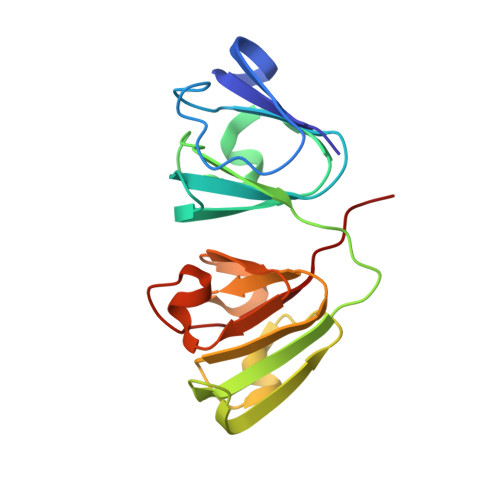The human W42R gamma D-crystallin mutant structure provides a link between congenital and age-related cataracts.
Ji, F., Jung, J., Koharudin, L.M., Gronenborn, A.M.(2013) J Biological Chem 288: 99-109
- PubMed: 23124202
- DOI: https://doi.org/10.1074/jbc.M112.416354
- Primary Citation of Related Structures:
4GR7 - PubMed Abstract:
Some mutants of human γD-crystallin are closely linked to congenital cataracts, although the detailed molecular mechanisms of mutant-associated cataract formation are generally not known. Here we report on a recently discovered γD-crystallin mutant (W42R) that has been linked to autosomal dominant, congenital cataracts in a Chinese family. The mutant protein is much less soluble and stable than wild-type γD-crystallin. We solved the crystal structure of W42R at 1.7 Å resolution, which revealed only minor differences from the wild-type structure. Interestingly, the W42R variant is highly susceptible to protease digestion, suggesting the presence of a small population of partially unfolded protein. This partially unfolded species was confirmed and quantified by NMR spectroscopy. Hydrogen/deuterium exchange experiments revealed chemical exchange between the folded and unfolded species. Exposure of wild-type γD-crystallin to UV caused damage to the N-terminal domain of the protein, resulting in very similar proteolytic susceptibility as observed for the W42R mutant. Altogether, our combined data allowed us to propose a model for W42R pathogenesis, with the W42R mutant serving as a mimic for photodamaged γD-crystallin involved in age-related cataract.
- School of Life Science and Biotechnology, Dalian University of Technology, Lingong Road, Dalian 116024, China.
Organizational Affiliation:

















